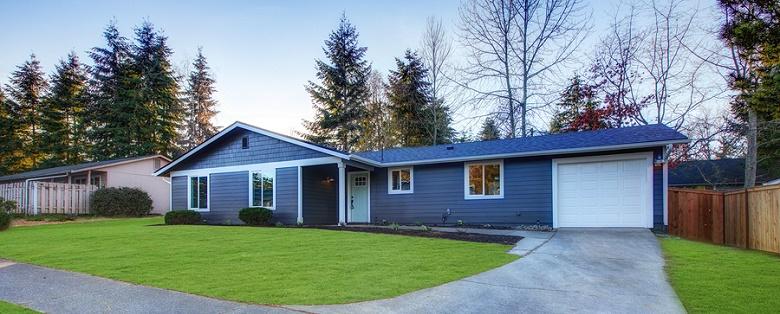
Low slope roofs are those with less than 14 degrees of angle as measured from the high point to the low side. They are most commonly used on commercial buildings but may be used on some homes as well. When properly installed and maintained by experienced roofing companies, low slope roofs can be just as functional as any other.
The reduced angle does make them more susceptible to a number of roofing problems. It is important that building owners work with experienced contractors who can perform a correct installation and monitor for these issues as time passes.
- Leaking - Any roof can leak; however, low slope and flat roofs are more likely to develop leaks than pitched ones. This is due to the lack of angle that allows water to sit longer on the surface. Sharper, steeper angles promote water shedding, while lower, flatter angles allow rainwater to stay longer. If there are any small surface cracks or imperfections as well as any improperly installed flashing, chances are good that a leak could develop.
- Tenting and Blow-Offs - It is also common for low slope roofing to experience tenting. This is when the wind blows under the surface, pushes it up, and parts of the surface can actually be blown off by air getting under it. This happens due to improper installation and sealing of the flashing. If there is a way for the wind to get in and under the surface, it will.
- Blistering - Blistering and other forms of surface erosion are a result of improper application of the membrane material. When the material is not properly adhered to the decking, air and moisture trapped underneath can blister up after prolonged exposure to the sun. Smaller blisters are not a major concern; however, larger ones need repairs by experienced roofing companies to prevent them from bursting and causing leaks as well as other, more significant damage.
- Punctures and Penetrations - Punctures can happen in high traffic areas on any low slope installation simply by walking on the roofing for any reason. Any penetrations made post-installation, like replacing or adding a new HVAC, can increase the chance of leaks at those penetration points.
- Water Ponding - Although low slope roofs do have a slight angle to promote water shedding, ponding can occur if there are uneven spots in the surface. These areas are then more susceptible to leaking, especially if other problems affecting the integrity of the membrane exist.
- Membrane Shrinkage - Membrane systems are also prone to shrinkage around the edges and penetrations as well as installed flashing. When the membrane shrinks around flashing, it invites problems like leaks and blow-offs. Roofing companies should check for evidence of shrinkage regularly and make repairs as needed.
- Poor Workmanship and Repairs - Low slope surfaces can experience quite a few issues that lead to leaks and other problems simply due to poor workmanship. BUR and membrane roofs require careful attention to details for them to remain properly adhered and functional. When contractors do not pay attention to correct installation practices, problems can arise. In addition, repairs made incorrectly or the use of the wrong materials can cause or increase damage to the surface.
While low slope roofing may seem simple, it is predisposed to a number of problems that could result in considerable damage over time. To ensure the best installation of any low slope membrane roof, it is important to hire roofing companies experienced with these types of systems!